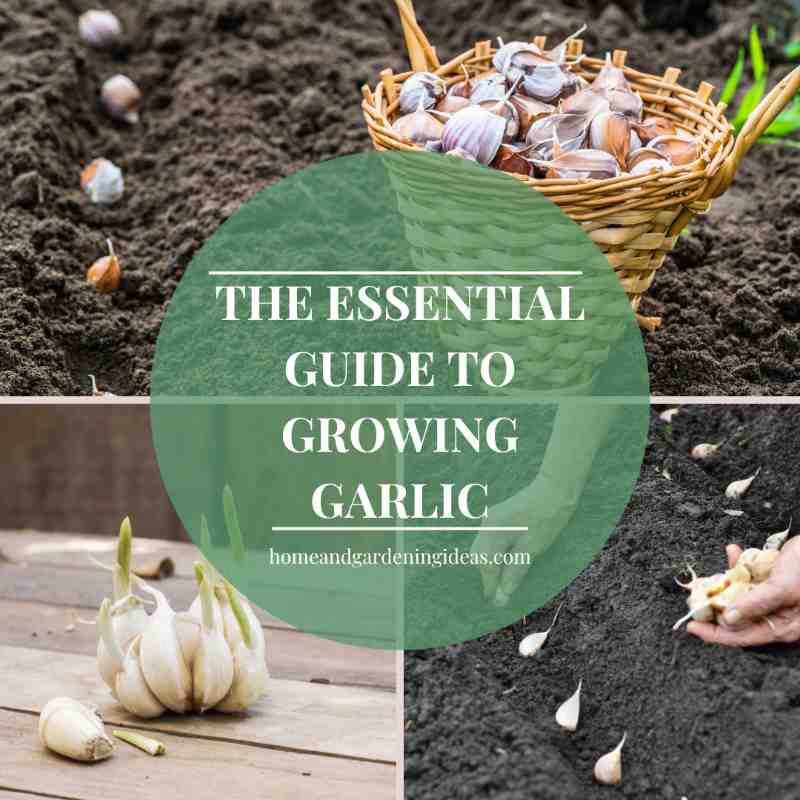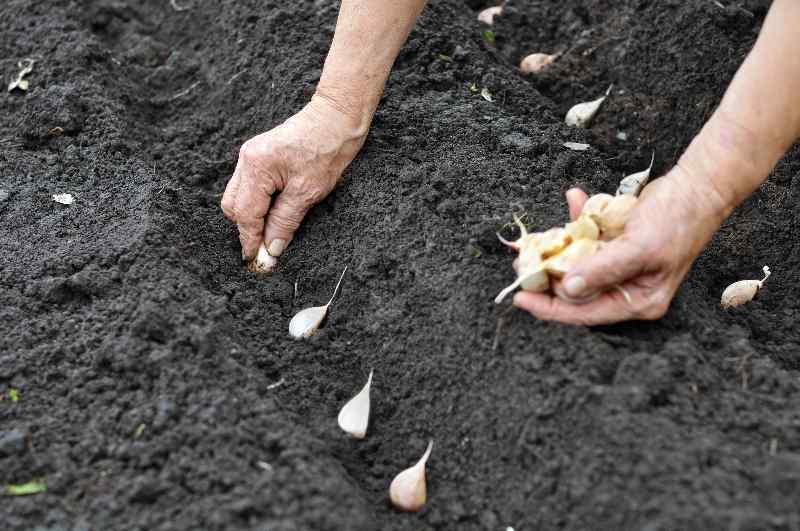The Essential Guide to Growing Garlic: Simple Tips for Success

Introduction: Garlic (Allium sativum) is a versatile and widely used culinary herb that also offers numerous health benefits. Growing your own garlic can be a rewarding experience, as it allows you to enjoy the freshest and most flavorful bulbs while ensuring their quality and organic nature.
In this comprehensive guide, we will explore various types of garlic, optimal planting times in the USA, essential care tips, the best time to harvest, and the ideal soil conditions for successful cultivation.
Types of Garlic:
Garlic can be categorized into two primary types: hardneck garlic and softneck garlic.
- Hardneck Garlic:
- Hardneck varieties are known for their rich and complex flavors.
- They produce a central flowering stalk known as a “scape” that can be harvested and used in cooking.
- Popular hardneck varieties include Rocambole, Porcelain, and Purple Stripe.
- Softneck Garlic:
- Softneck garlic varieties are milder in flavor and have a longer shelf life.
- They do not produce scapes and are typically the type found in grocery stores.
- Popular softneck varieties include Artichoke and Silverskin.
Planting Garlic in the USA:
Garlic is usually planted in the fall, allowing it to establish roots before going dormant during winter. The specific planting time varies depending on the region.
- Northern States (USDA Hardiness Zones 3-6):
- Plant garlic in late September or early October, about 4-6 weeks before the ground freezes.
- Cold winters provide a chilling period necessary for bulb development.
- Central States (USDA Hardiness Zones 7-8):
- Plant garlic in mid-to-late October for optimal results.
- Moderate winters are ideal for garlic growth.
- Southern States (USDA Hardiness Zones 9-10):
- Plant garlic in late November or early December.
- Mild winters require specific garlic varieties that can withstand warmer conditions.
Caring for Garlic Plants:
Garlic requires minimal care but does benefit from attention to ensure healthy growth and abundant harvests.

- Soil:
- Garlic thrives in loose, well-draining soil rich in organic matter.
- Amend heavy clay or sandy soil with compost to improve its texture and fertility.
- Planting:
- Break apart the garlic bulb into individual cloves, ensuring the papery skin remains intact.
- Plant each clove pointed side up, 2-3 inches deep and 6-8 inches apart, in rows spaced 12-18 inches apart.
- Watering:
- Water garlic regularly but avoid overwatering, as it can lead to rot.
- Maintain consistent soil moisture, especially during dry spells, and reduce watering as harvest time approaches.
- Fertilization:
- Apply a balanced organic fertilizer during planting and a nitrogen-rich fertilizer in early spring.
- Avoid excessive nitrogen during bulb formation to prevent excessive leaf growth.
- Weed Control:
- Keep the garlic bed weed-free by regularly removing weeds, as they compete for nutrients and water.
- Mulching:
- Apply a layer of organic mulch, such as straw or chopped leaves, to conserve soil moisture, suppress weeds, and insulate the bulbs during winter.

Harvesting Garlic:
Knowing when to harvest garlic is crucial to achieve optimal flavor and storage life.
- Leaf Yellowing:
- When most of the lower leaves turn yellow and dry, it indicates that the garlic is nearing maturity.
- Avoid waiting until all leaves have died back, as this may result in bulbs splitting or rotting in the ground.
- Timing:
- Harvest hardneck varieties when the lower leaves have yellowed, but the upper leaves are still green.
- Harvest softneck varieties when the foliage is around 50% yellow.
- Harvesting Method:
- Use a garden fork or shovel to gently loosen the soil around the bulbs.
- Lift the bulbs carefully, taking care not to damage them.
- Brush off excess soil and allow the garlic to dry in a well-ventilated area for two to three weeks.
Growing your own garlic can be a rewarding and flavorful endeavor. By choosing the right garlic type, planting at the appropriate time, providing proper care, and harvesting at the right moment, you can enjoy a bountiful harvest of fresh, aromatic garlic bulbs.
With this comprehensive guide, you now have the knowledge to embark on a successful garlic-growing journey. So roll up your sleeves, get your hands dirty, and relish the satisfaction of growing your own garlic from start to finish.
(Note: This article aims to provide general guidelines for growing garlic. For specific regional recommendations and variations, consult local gardening resources or extension offices.)
 Home and Gardening Ideas At home and Gardening ideas we believe inspiring readers about homesteading, self sufficiency
Home and Gardening Ideas At home and Gardening ideas we believe inspiring readers about homesteading, self sufficiency





